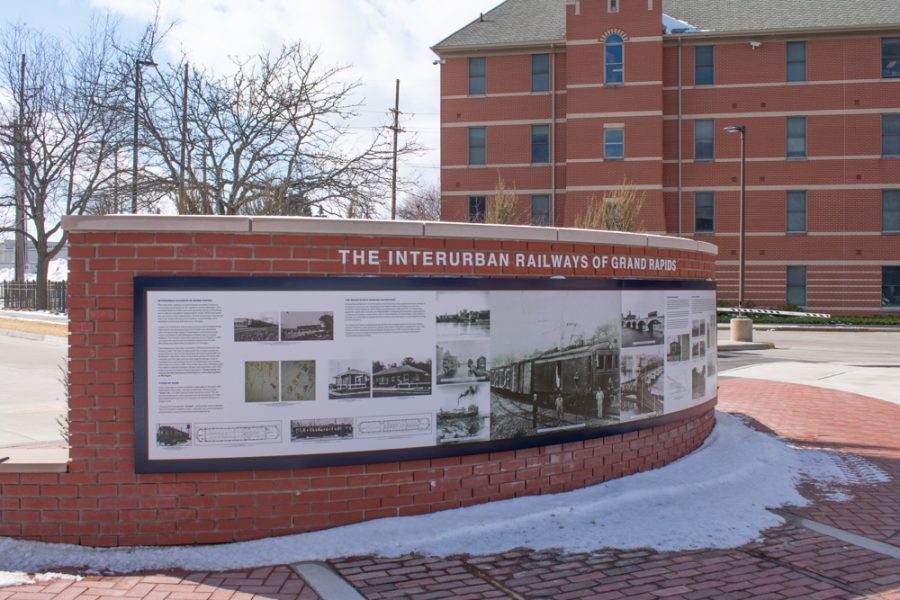GV exhibits the Interurban at the Pew Campus
Feb 28, 2022
Grand Valley State University is now exhibiting what is left of the Interurban railway track at the Pew campus. This will be used to commemorate and teach the history of the electric transportation system within the city of Grand Rapids dating back to the late 1800s.
Nathan Kemler, GVSU director of galleries and collections, worked on bringing this piece to GVSU. The idea for this exhibition came to life after the Mount Vernon Pedestrian Mall project was approved by former GVSU President Thomas Hass. After that, a letter was written to Haas asking for more attention to be brought to the tracks. Kemler would later be asked by the office of presidents to move forward with making the Interurban Railway marker exhibition.
The Railway exhibition is a unique opportunity for students and the Grand Rapids community to learn more about electric public transportation in the West Michigan community.
“This project is unique because we often forget about important past innovations that are still relevant today,” Kemler said. “In this case, we have tracks in the ground that are over 100 years old that point to an equitable transportation technology that we are finding ourselves in search of again today.”
Matthew Daley, a GVSU history professor, was also involved with this project. Daley said the exhibition is beneficial for students to learn about. He said the interurban system was an effective means of transportation between cities and towns for a relatively low cost along with being less damaging to the environment.
“Today we talk about electric cars and electricity as if it’s some sort of new idea, but these concepts already existed and their disappearance was not merely due to having a ‘better technology’ in fact, far from it,” Daley said.
Kemler went on to speak about today’s changing world and how our surrounding landscapes and environments are constantly evolving. He said that the interurban railways of Grand Rapids had many benefits that many did not recognize.
“The Interurban railways of Grand Rapids include numerous community advantages for the residents of West Michigan,” Kemler said. “This included health benefits, economic benefits, social connections and a safe and equitable transportation mode.”
GVSU was about to save two remnants of the original track, which is significant as it’s one of the only remaining pieces of the old city. Both the tracks and the bricks that encase them give viewers a look into the past.
‘The exhibit is more than just about railroads – it also shows the neighborhood where GVSU’s downtown campus sits today – that the space has been made and remade many times,” Daley said. “The community that surrounds GV’s campus remains a vibrant community as it was during the early 20th century and that legacy can be seen just walking down the street.”
Daley also goes on to say that it’s important to remember that GVSU is built upon Native American lands and the exhibition will acknowledge that.
“The exhibit also acknowledges that GVSU is built upon Native American lands that still remain a vital part of their identity and culture despite the changes done to them,” Daley said. “We need to be mindful and respectful of that fact as well.”
Future events that students and members of the community can look forward to include additional works of art that are in the process of being acquired for the GVSU Mount Vernon Pedestrian Mall space.






















